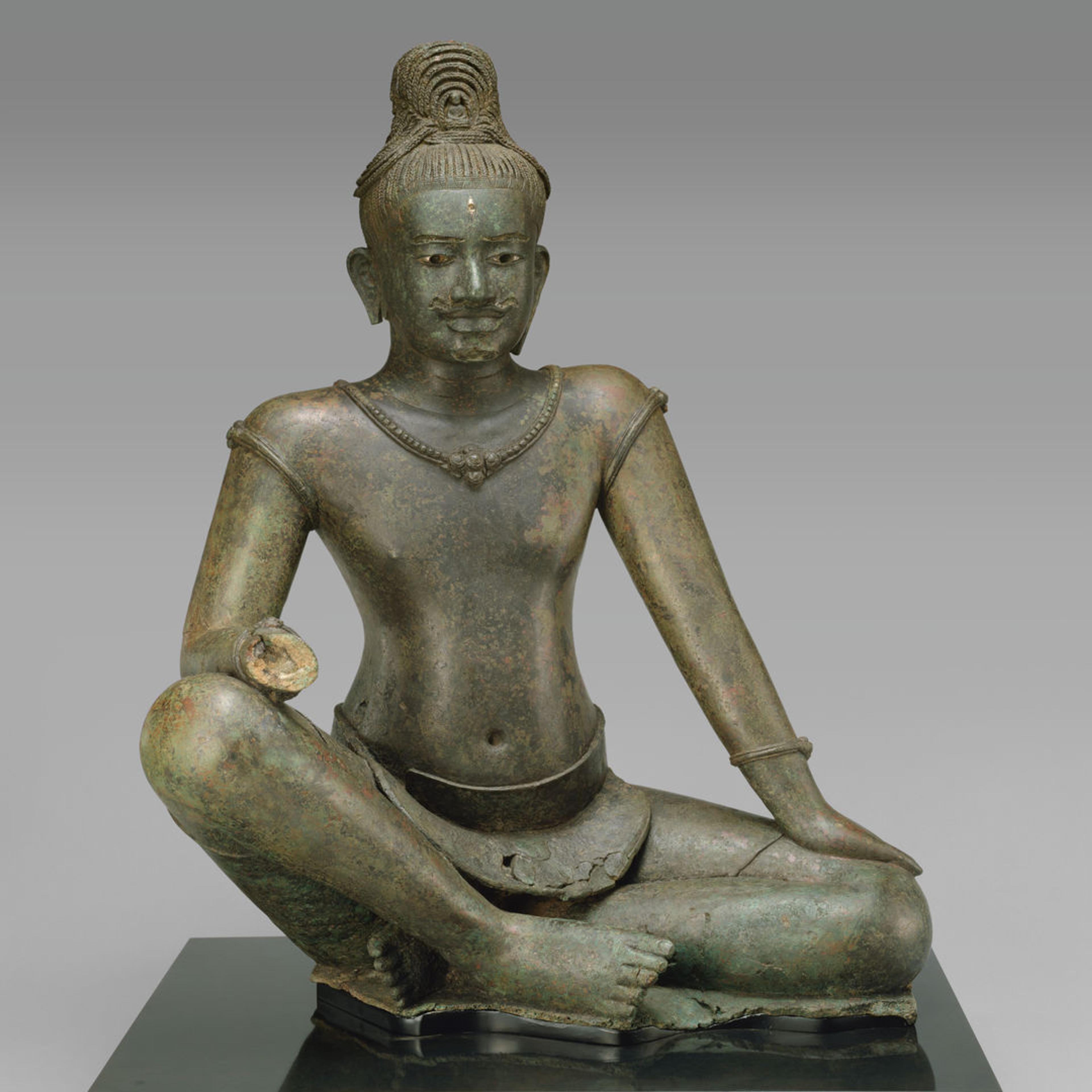Over the past year, we have provided multiple updates on The Met’s increased engagement with issues of cultural property, specifically on our efforts to ensure the return of works of art, as appropriate, to their countries of origin. Last week we announced the repatriation of sixteen sculptures—fourteen to the Kingdom of Cambodia and two to the Kingdom of Thailand—effectively removing from our collection all Angkorian sculptures known by the Museum to be associated with the disgraced dealer Douglas Latchford. This latest news rounds out a year during which we engaged with countries and colleagues around the world on restitutions, partnerships, and public engagement events. While this work is complex, I am encouraged by our progress, and we are proceeding with focus and tenacity.
Douglas Latchford has rightly been the focus of much scrutiny by the media (most recently, an investigative report on CBS’s 60 Minutes) and by experts in the field, including at The Met. Here, we have been working diligently for years to resolve questions surrounding a group of Khmer works associated with him in the collection. Previously celebrated with the highest honors from the Cambodian government for “his unique contribution to scholarship and understanding of Khmer culture,” Mr. Latchford was indicted for selling antiquities illegally in 2019, after which The Met proactively reached out to the U.S. Attorney’s Office for the Southern District of New York and to Cambodian officials. Through this cooperative partnership, the Museum received new information—including details gathered by Cambodia from individuals who testified to their participation in looting the works—about the sculptures in The Met’s collection that made it clear that the works should be transferred to Cambodia and Thailand. We have since signed an agreement with U.S. Attorney’s Office to repatriate thirteen works to Cambodia; and in parallel, our further research revealed that an additional work should be returned to Cambodia, and two more works should be returned to Thailand.
The works of art being repatriated were made between the 9th and 14th centuries in the Angkorian period and reflect the Hindu and Buddhist religious systems prevailing at that time. Ten of the sculptures—including the bronze masterpiece The Bodhisattva Avalokiteshvara Seated in Royal Ease (late 10th–early 11th century), and the monumental stone Head of Buddha (7th century)—are temporarily on view in the Museum’s galleries for Southeast Asian art. The works are now being presented as the repatriated heritage of Cambodia and Thailand, respectively, while arrangements are made for their return to the appropriate countries.
We are grateful for the partnerships with our colleagues in the U.S. Attorney’s Office and in Cambodia and Thailand that helped bring about this landmark moment. We welcomed comments from Mr. Phnombootra Chandrajoti, Director-General of Thailand’s Fine Arts Department who stated, “We are very pleased that The Met has reached out to us and proactively proposed the return of these two objects to Thailand. This act serves as a model for ethical collecting practices and strengthens the bonds of cultural respect and collaboration between Thailand and The Met. We view this return as a significant milestone in our ongoing efforts to repatriate cultural treasures, and we hope it inspires further partnerships as we work together to foster the exchange of knowledge and to ensure the return of cultural artifacts where appropriate to their countries of origin. In Thailand, the committee for repatriation, chaired by the Cultural Minister, is actively engaged in research initiatives to identify and track down additional objects that may have been illegally removed from the country in the past, further paving the way for a future where cultural heritage is preserved and valued in its rightful place.” Additionally, the Cambodian Ministry of Culture and Fine Arts said, “We appreciate this first step in the right direction. We look forward to further returns and acknowledgments of the truth regarding our lost national treasures.”
There is more work to be done. Our research is active and ongoing, and with further and new information we are continuing to review our works of Khmer art and will be in dialogue with officials in Cambodia and Thailand. We look forward to embarking on this new chapter together, and we are dedicated to pursuing partnerships and collaborations with our colleagues there that will advance the world’s understanding and appreciation of Khmer art.
Provenance (or the ownership history of an object) and repatriation have been a particular focus among museum leaders, scholars, and audiences for some time. The Met’s work in this area impacts a small, yet important, number of works in our collection, and our commitment to investigate how certain objects came to the Museum’s collection and take appropriate action when we find that a work should be repatriated is reflected in several recent returns we have made (most recently to Nepal, Yemen, India, and Turkey). To drive and support this critical work, earlier this year we launched an initiative to intensify our efforts to study works in the collection, which includes the hiring of several additional provenance experts, and an expansion of public convenings on this topic.
The issue is multifaceted and requires consideration across all our relevant collection areas. Of course, as a large and high-profile institution, we expect continued scrutiny of our work in this area, and we welcome all avenues to learn more about the history of objects in our collection.
This complex work takes time, and we are committed to doing the right thing as it is core to our mission to act responsibly and to seek greater understanding of our shared cultural heritage as well as the origins and evolution of institutions like The Met. I invite anyone interested in learning more on this topic to visit our Collecting Practices web hub for in-depth information about how works have joined the Museum’s collection and our cultural property initiative.
